John Burns is a British recording engineer best known for his credits with noted bands of the 1970s including Jethro Tull, Clouds, Genesis, John Martyn and reggae acts Burning Spear, Delroy Washington, Jimmy Cliff and Toots & The Maytals.
John Burns is a British recording engineer best known for his credits with noted bands of the 1970s including Jethro Tull, Clouds, Genesis, John Martyn and reggae acts Burning Spear, Delroy Washington, Jimmy Cliff and Toots & The Maytals.
Burns (who is also a guitarist) played in a teenage band with Andy Johns, [1] the engineer and younger brother of Glyn Johns, and Andy Johns got Burns his first job in the industry, as tea-boy and tape operator at Morgan Studios in 1965, at the time when Morgan were doing all of the recordings for Chris Blackwell's Island Records.
Burns graduated to assistant engineer with the Jethro Tull albums Stand Up (1969) and Benefit (1970); his credits in this period include the self-titled album by Blind Faith (1969), Humble Pie, Jethro Tull, Spooky Tooth, Blodwyn Pig, Ten Years After, Quintessence, David Bowie, King Crimson and Donovan. [2] During 1970 he worked as a live engineer for acts including Jimi Hendrix, The Who and Johnny Winter. He was a live sound engineer at the Isle of Wight Festival in 1969. [2] and toured extensively with Jethro Tull.
He returned to studio work after touring with Tull and Clouds over a period of eighteen months, [1] and engineered Tull's breakthrough Aqualung (1970) album. During a period as freelance engineer with Island Records, when he often stood in for other engineers on sessions, he worked with major acts including Traffic, Mott the Hoople, [3] Fairport Convention, Free, [1] Curved Air, Deep Purple, Marc Bolan and T. Rex, Jeff Beck, Alexis Corner, Jimmy Cliff, Toots & the Maytals and John Martyn, on the sessions that became Martyn's classic Solid Air (1973) album. [2] His first producer credit came when he produced and engineered the now much-heralded Watercolour Days by Clouds in 1971.
In 1972 he began a successful collaboration with progressive rock band Genesis on their Foxtrot album replacing two previous engineers who had been brought in and then quit. [1] Genesis were impressed with his work and he went on to co-produce (with the band) their next three albums -- Selling England by the Pound (1973), which included their first charting single, "I Know What I Like (In Your Wardrobe)", Genesis Live (1973) and their ambitious 2LP concept album The Lamb Lies Down on Broadway (1974), the last Genesis studio album with original lead singer Peter Gabriel. [2]
Later in 1974 he worked at Ginger Baker's studio in Lagos, Nigeria with the late Fela Ransome-Kuti. In 1975 Burns mixed a dub version of Burning Spear's "Garvey's Ghost". During a brief period as owner of Escape Studios in Kent in the late 1970s, he recorded artists including Eric Clapton and Ginger Baker and engineered Motörhead's 1977 self-titled album with producer John "Speedy" Keen (ex Thunderclap Newman). [2] He also produced Straight Eight a band signed to Pete Townshends Eel Pie Label, their first album No Noise from Here. Burns had few major credits after the end of the '70s but has recently[ when? ] begun recording again, working with US singer Lisa Doby and the band JEBO. [1] [2] He is credited as remastering engineer for the reissue of the 1998 Gary Numan album Exile . [4]

Island Records is a multinational record label owned by Universal Music Group. It was founded in 1959 by Chris Blackwell, Graeme Goodall, and Leslie Kong in Jamaica, and was eventually sold to PolyGram in 1989. Island and A&M Records, another label recently acquired by PolyGram, were both at the time the largest independent record labels in history, with Island having exerted a major influence on the progressive music scene in the United Kingdom in the early 1970s. Island Records operates four international divisions: Island US, Island UK, Island Australia, and Island France. Current key people include Island US president Darcus Beese, OBE and MD Jon Turner. Partially due to its significant legacy, Island remains one of UMG's pre-eminent record labels.

Aqualung is the fourth studio album by the British rock band Jethro Tull, released on 19 March 1971, by Chrysalis Records. It is widely regarded as a concept album featuring a central theme of "the distinction between religion and God", though the band have said there was no intention to make a concept album, and that only a few songs have a unifying theme. Aqualung's success signalled a turning point in the career of the band, which went on to become a major radio and touring act.
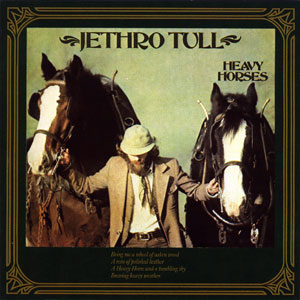
Heavy Horses is the eleventh studio album by British progressive rock band Jethro Tull, released on 10 April 1978.
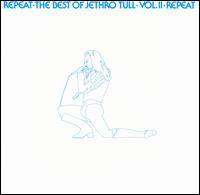
Repeat – The Best of Jethro Tull – Vol II is a 1977 greatest hits album from Jethro Tull, featuring one track which, up to the time of this album's release, had not been issued. The album's first volume was M.U. – The Best of Jethro Tull.

A is the 13th studio album by British rock band Jethro Tull. It was released on 29 August 1980 in the UK and 1 September of the same year in the United States.

Ian Scott Anderson is a Scottish musician, singer, and songwriter best known for his work as the lead vocalist, flautist, acoustic guitarist and leader of the British rock band Jethro Tull. He is a multi-instrumentalist who, in addition to flute and acoustic guitar, plays keyboards, electric guitar, bass guitar, bouzouki, balalaika, saxophone, harmonica and a variety of whistles. His solo work began with the 1983 album Walk into Light; since then he has released another five works, including the sequel to the Jethro Tull album Thick as a Brick (1972) in 2012, titled Thick as a Brick 2.

Stand Up is the second studio album by British rock band Jethro Tull, released in 1969. It was the first Jethro Tull album to feature guitarist Martin Barre, who would go on to become the band's longtime guitarist until its initial dissolution in 2012. Before recording sessions for the album began, the band's original guitarist Mick Abrahams departed the band as a result of musical differences with frontman and primary songwriter Ian Anderson; Abrahams wanted to stay with the blues rock sound of their 1968 debut, This Was, while Anderson wished to add other musical influences such as folk rock.

Minstrel in the Gallery is the eighth studio album by British rock band Jethro Tull, released in September 1975. The album sees the band going in a different direction from their previous work War Child (1974), returning to a blend of electric and acoustic songs, in a manner closer to their early 1970s albums such as Benefit (1970), Aqualung (1971) and Thick as a Brick (1972). Making use of a newly constructed mobile recording studio commissioned and constructed specifically for the band, the album was the first Jethro Tull album to be recorded outside of the UK, being recorded in tax exile in Monte Carlo, Monaco.
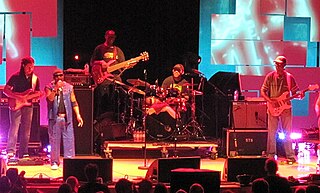
The Maytals, known from 1972 to 2020 as Toots and the Maytals, are a Jamaican musical group, one of the best known ska and rocksteady vocal groups. The Maytals were formed in the early 1960s and were key figures in popularizing reggae music.

War Child is the seventh studio album by Jethro Tull, released in October 1974. It was released almost a year and a half after the release of A Passion Play. The turmoil over criticism of the previous album surrounded the production of War Child, which obliged the band to do press conferences and explain their plans for the future.

Benefit is the third studio album by the British rock band Jethro Tull, released in April 1970. It was the first Tull album to include pianist and organist John Evan – though he was not yet considered a permanent member of the group – and the last to include bass guitarist Glenn Cornick, who was fired from the band upon completion of touring for the album. It was recorded at Morgan Studios, the same studio where the band recorded its previous album Stand Up; however, they experimented with more advanced recording techniques.
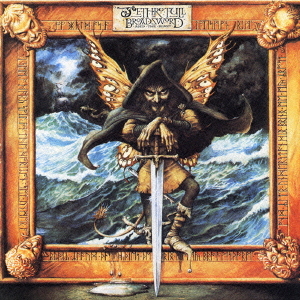
The Broadsword and the Beast is the 14th studio album by rock band Jethro Tull, released on 10 April 1982. The album is a cross between the dominant synthesizer sound of the 1980s and the folk-influenced style that Jethro Tull used in the previous decade. As such, the band's characteristic acoustic instrumentation is augmented by electronic soundscapes, provided by new keyboardist Peter-John Vettese. The electronic aspects of this album would be explored further by the band on their next release, Under Wraps, as well as on Ian Anderson's solo album Walk into Light, released between the two.

Clive William Bunker is a British drummer. Bunker is best known as the original drummer of the rock band Jethro Tull, playing in the band from 1967 until 1971. Never a self-professed technical drummer, Bunker engaged with the essence of blues and rock and roll, influenced by Ginger Baker and Mitch Mitchell. He was also inspired by Buddy Rich and The Hollies' Bobby Elliott.
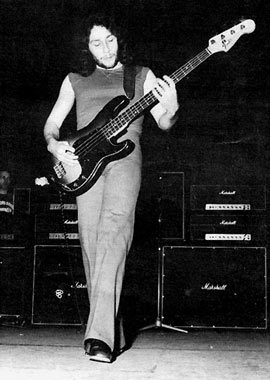
John Glascock was a British musician. He was the bassist and occasional lead vocalist of the rock band Carmen from 1972 to 1975; and the bass guitarist for progressive rock band Jethro Tull from 1976 until his death in 1979. Glascock died at the age of 28 as a result of a congenital heart valve defect, which was worsened by an infection caused by an abscessed tooth.

M.U. – The Best of Jethro Tull, released in 1976, is the first proper greatest hits album by Jethro Tull. It spans the years 1969 to 1975. The earlier Living in the Past (1972) compilation mainly dealt with non-album material, but this album only features one previously unreleased song, "Rainbow Blues".
Basing Street Studios was a recording studio in a former 17th century chapel at 8–10 Basing Street, in Notting Hill, London, England. Originally established in 1969 as Island Studios by Chris Blackwell, the founder of Island Records, the studio's location also housed the offices for Island Records from 1969 until 1973, and was renamed Basing Street Studios in 1975. Island/Basing Street Studios produced many notable recordings in the 1970s from artists including Bob Marley and the Wailers, Led Zeppelin, Jethro Tull, Traffic, and Dire Straits. In 1982, the studios were acquired by Sarm Studio owners Jill Sinclair and her husband, producer Trevor Horn in 1982, and renamed Sarm West.
Sound Techniques was a recording studio in Chelsea, London that was operational between 1965 and 1976. Housed in a former dairy, it was founded by recording engineers Geoff Frost and John Wood. The studio became well known as the place where many of the folk-rock acts signed to Joe Boyd's Witchseason publishing company, such as Fairport Convention, Nick Drake and John Martyn, recorded their albums in the late 1960s and early 1970s, but it was also the studio where early records by Pink Floyd, Elton John and Jethro Tull were made.
Morgan Studios was an independent recording studio in Willesden in northwest London. Founded in 1967, the studio was the location for recordings by notable artists and bands such as The Cure, Jethro Tull, the Kinks, Paul McCartney, Yes, Black Sabbath, Donovan, Joan Armatrading, Cat Stevens, Rod Stewart, UFO and many more. Morgan sold its studios in the early 1980s, with some of its studios succeeded by Battery Studios.

Bumpers is a double sampler album from Island Records, released in Europe and Australasia in 1970; there were minor variations in track listings within Europe but the Australian release was fundamentally different. The title refers to the basketball-style shoes on the front of the album cover and to the meaning "unusually large, abundant or excellent". The album is left to present itself: there are no sleeve notes; the gatefold interior consists of a photograph showing publicity shots of the featured acts attached to the stump of a tree on a seemingly wet and gloomy day, without any identification. This image is flanked on each side by the track listings, but even there, the information given is unreliable. Unlike its predecessors You Can All Join In and Nice Enough To Eat, there are no credits for cover art. [It was in fact by Tony Wright - his first sleeve for Island.] The English version of the album came out in two pressings, first with the pink label and "i" logo, and later with the palm motif on a white background and pink rim, each version with some minor variations in the production of individual tracks.

Earl “Paul” Douglas is a Jamaican Grammy Award-winning drummer and percussionist, best known for his work as the drummer, percussionist and bandleader of Toots and the Maytals. His career spans more than five decades as one of reggae's most recorded drummers. Music journalist and reggae historian David Katz wrote, “dependable drummer Paul Douglas played on countless reggae hits."